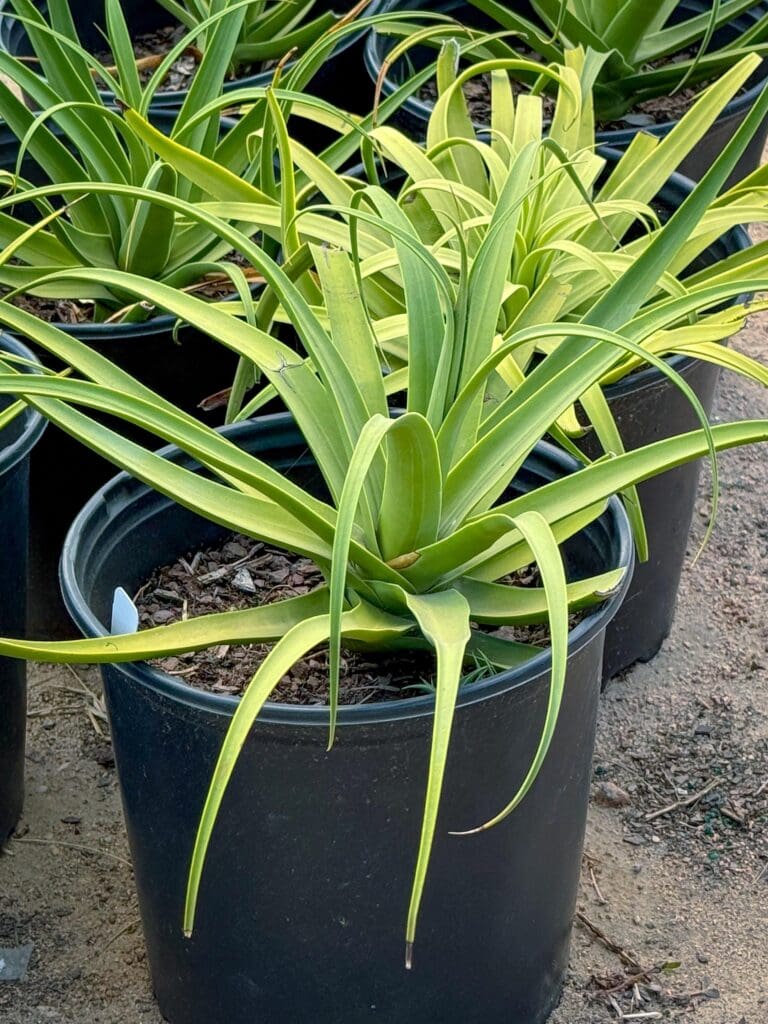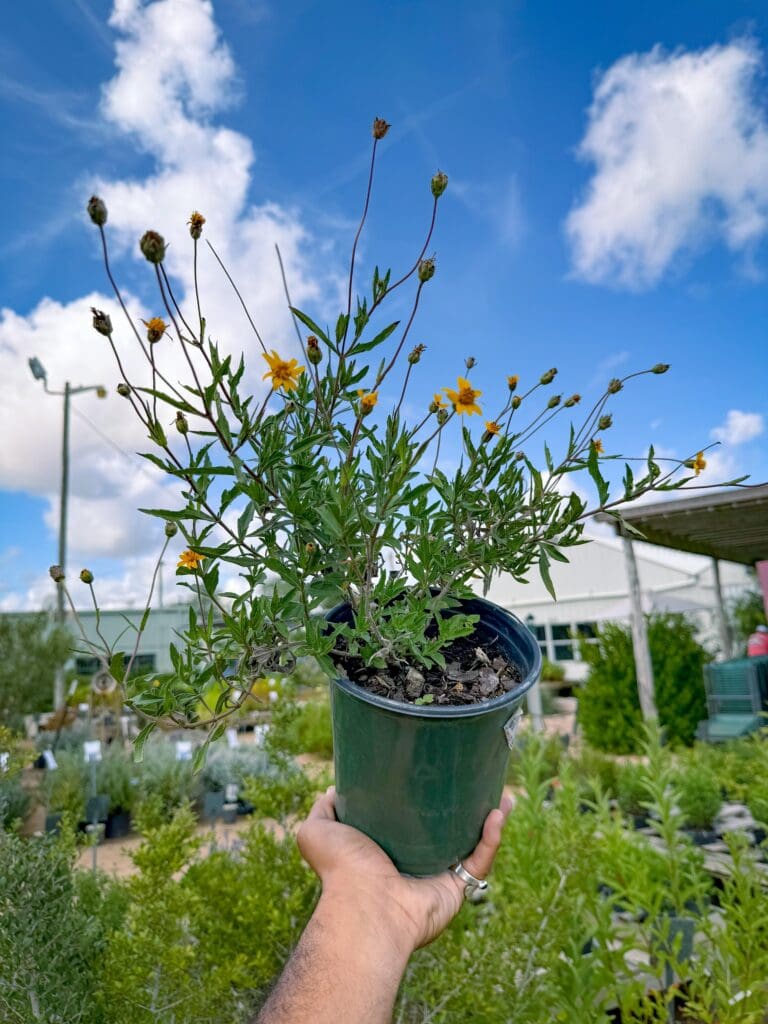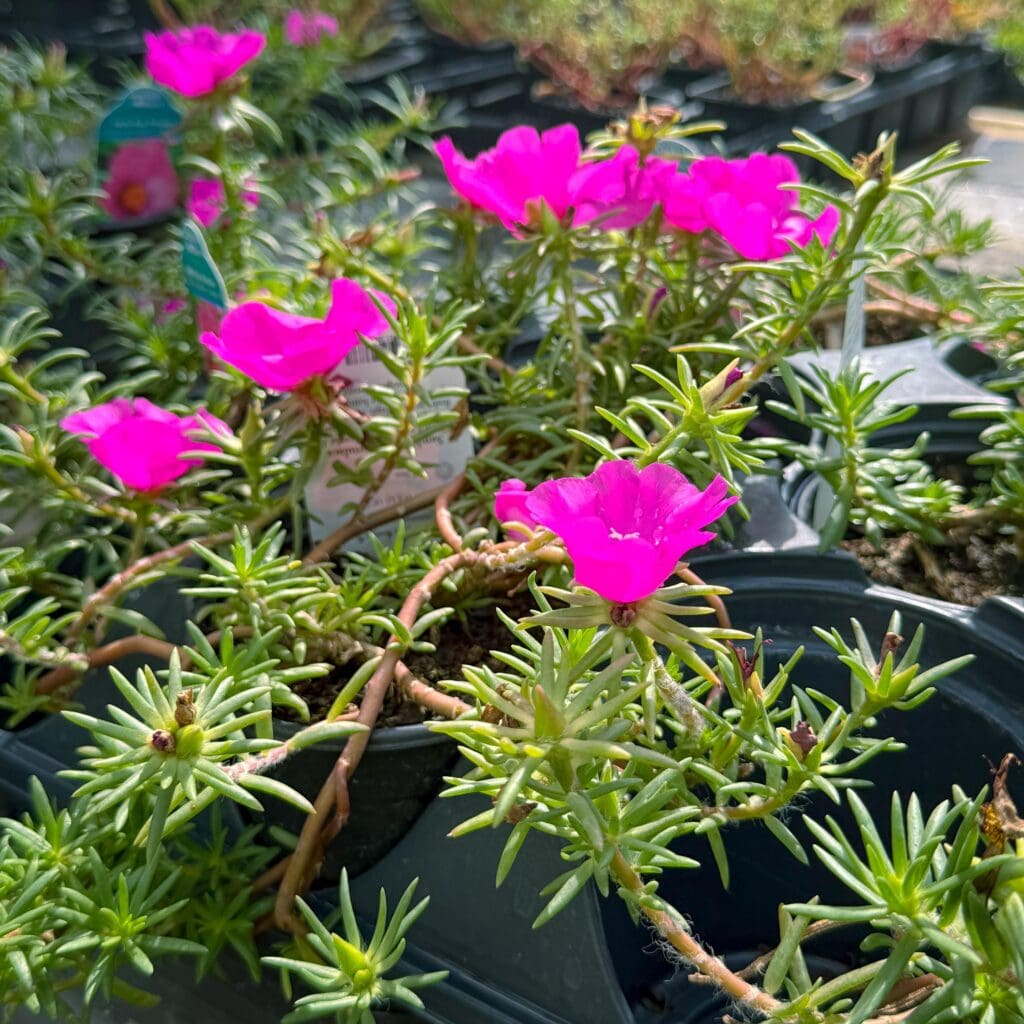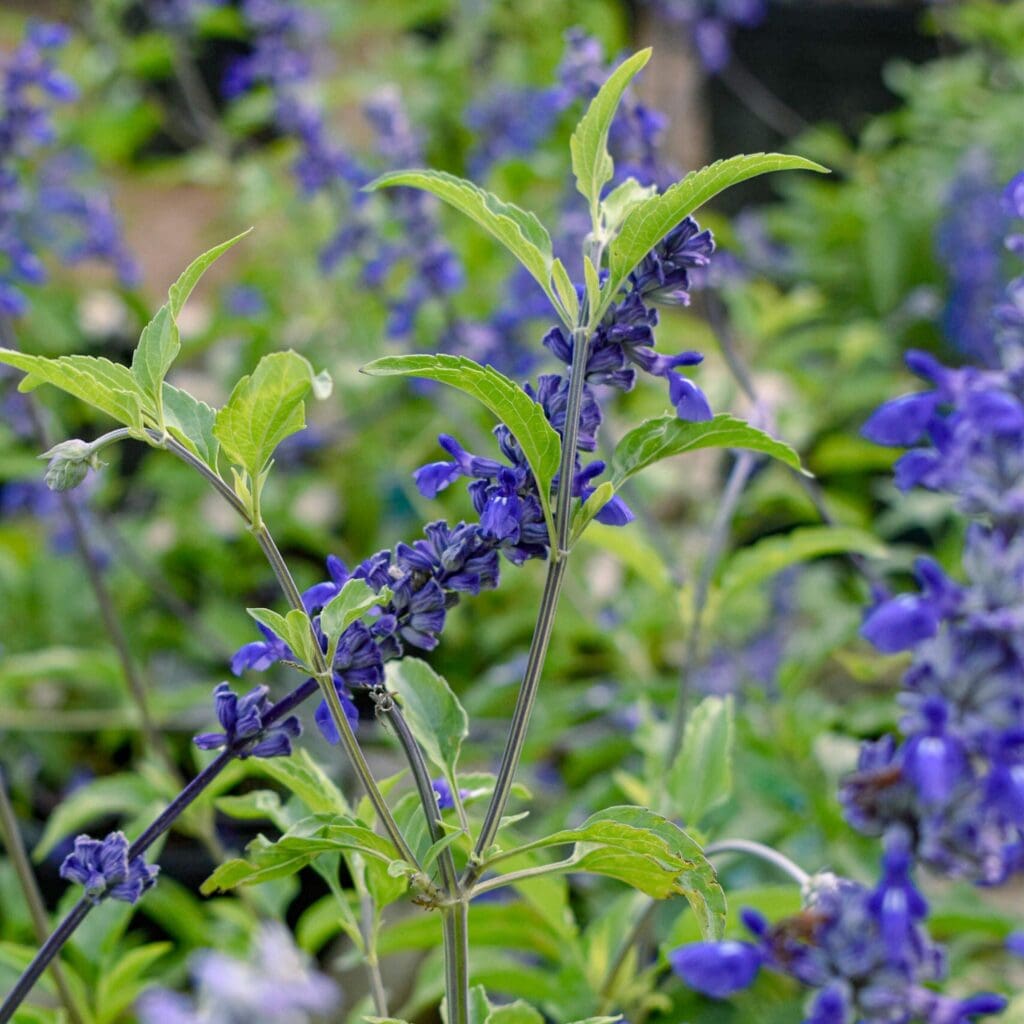August in South Texas is when some plants get summer-tired, which is normal and understandable! It’s likely nothing you’re doing wrong as a gardener, and the majority of tired plants will bounce back just fine as we move into fall. On the other hand, August also makes you notice which plants are thriving and don’t seem fazed at all. Here’s our list of 10 late summer low water warriors – some of these may surprise you!
Snow White Indian Hawthorn (Rhaphiolepis indica)

This evergreen beauty offers tidy mounds of glossy foliage and crisp white blooms in spring. It’s like the little black dress of the shrub world—classic, stylish, and never fussy. Once established, it needs very little supplemental water. It’s often used for foundation planting in the landscape for a reason—it’s tough, tidy, reliable, and handles heat and full sun like a champ.
Squid Agave (Agave bracteosa)

With twisty, tentacle-like leaves, this agave adds a splash of whimsy to rock gardens or containers. No spines, no drama—just architectural flair. Water sparingly! This agave thrives on neglect. It’s also one of the few agaves that works very well in the shade – a great option to plant in mass under oak trees.
Pomegranate Tree (Punica granatum)

This small tree or large shrub offers stunning orange-red blooms and juicy fruits that are as nutritious as they are beautiful. Deep, infrequent watering encourages better fruit production and root development. Fun fact: you’ll often see lone pomegranate trees out in the middle of an open field in South Texas, which typically indicates where a homestead once stood, and is a testament to the pomegranate’s resilience and longevity!
Red Yucca (Hesperaloe parviflora)

Despite the name, it’s not a true yucca—but it sure acts like one! Spiky blue-green leaves and tall spikes of coral-red flowers make this Texas native a showstopper. As DeAnna says, “everyone should have red yucca in their landscape!” Plant it in full sun and ignore it—really! It thrives with almost no care. Plus, its tubular flowers are irresistible to hummingbirds.
Texas Sage (Leucophyllum frutescens)

When rain is on the way, this shrub puts on a bloom explosion of purple-pink flowers. Hence one of it’s common names: Barometer Bush. Texas Sage needs almost zero watering once established. Overwatering = leggy growth and fewer blooms. Texas Sage is often seen as a wild desert scape plant, but it also has a home in a refined and manicured setting, like the photo above from a Gill’s landscape project.
Wild Olive Tree (Cordia boissieri)

This South Texas and northern Mexico native is also known as Mexican Olive, and offers ruffled white flowers year-round and a gentle tropical vibe without the water demand. It tolerates extreme drought and our heavy clay alkaline soils. Prune lightly to maintain shape. Its flowers are a favorite of native bees, butterflies, and hummingbirds—and it’s the official flower of Nuevo León, Mexico.
Zexmenia (Wedelia acapulcensis var. hispida)

This tough Texas native is a pollinator favorite with its golden daisy-like flowers and mounding growth habit. Zexmenia is excellent for erosion control on slopes or in dry beds. It loves sun, tolerates a variety of soil conditions, and requires very little water once established. Zexmenia blooms from spring through fall and is a nectar powerhouse for bees and butterflies.
Oleander (Nerium oleander)

This Corpus Christi classic with vibrant flowers in white, pink, or red and leathery evergreen leaves, adds a lush Mediterranean or tropical feel to local landscapes while being very drought tolerant. Avoid overhead watering to reduce fungal issues. Yes, Oleander is poisonous if ingested!
Samba Portulaca (Portulaca grandiflora)

Bright, bold, and born for the heat, Samba Portulaca twirls out colorful blooms even in scorching temps. Perfect for hanging baskets, containers, or hot border edges. Loves it dry and sunny. Flowers close at night and open again with the sun. It’s like your garden is waking up with you!
Henry Duelberg Salvia (Salvia farinacea ‘Henry Duelberg’)

A Texas superstar, this salvia produces deep blue spikes all season long and shrugs off heat and drought. Thrives in full sun with minimal watering. Deadhead to keep the blooms coming. Henry Duelberg salvia is one of the absolute best natives for attracting a variety of pollinators. Fun fact: Henry Duelberg salvia was discovered growing wild in a Texas cemetery and named after the man buried there along with a white blooming variety named after his wife Augusta Duelberg.



Reader Interactions